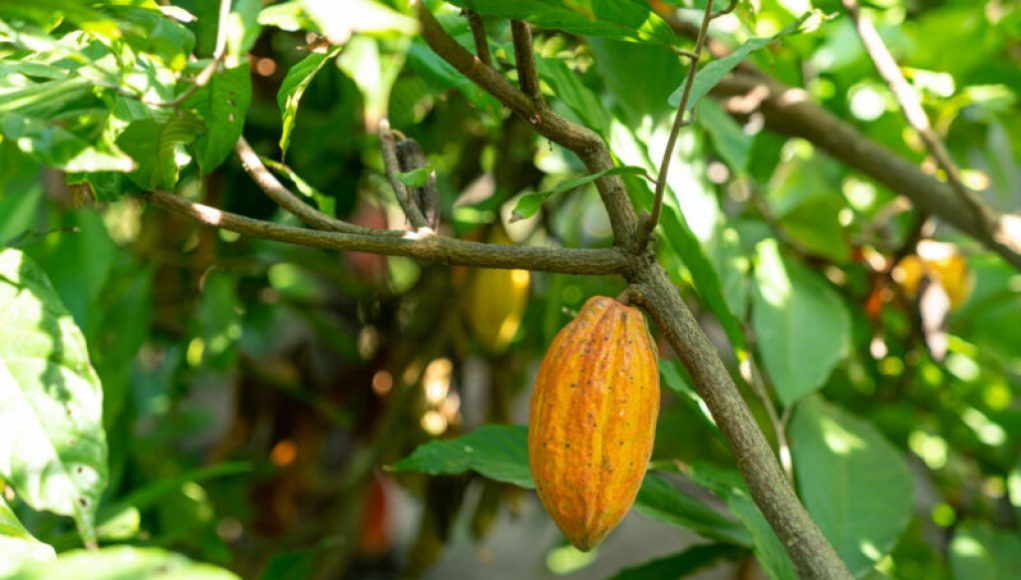Did you know that cocoa farmers in Ghana and Côte d’Ivoire make less than a dollar a day? That’s right, and there are almost 2 million of them. These two countries are the world’s largest cocoa producers, supplying two-thirds of the global supply. Cocoa is the primary perennial crop in both places.
But here’s the problem: there are no up-to-date, accurate maps of their cocoa plantations. This is a big issue since cocoa is known to be a primary driver of deforestation in the region. Clear-cutting forests to plant cocoa (or for any other reason) makes it hotter and makes storms stronger, both locally in Africa and across the planet.
Luckily, a team of European researchers has come up with a solution. They made a deep neural network to collate publicly available satellite images of both countries with georeferenced cocoa farms, identified by their regular polygons. They then had a team in Côte d’Ivoire trekking around for three months to visit the farms and verify their results.
What they found is alarming. In the densest cocoa-growing regions, about 40 percent of the land is planted with the crop, and little or no native forest is left. About 5 percent of the protected areas in Ghana and almost 15 percent of the protected areas in Côte d’Ivoire have been converted to cocoa farms—almost 30 percent of the cocoa farms in Côte d’Ivoire are in these protected areas.
The researchers calculate that cocoa is directly responsible for almost 40 percent of the deforestation in these protected areas—about 1.5 million hectares of forest gone since 2000. An analysis of plant health shows that the cocoa plants aren’t even doing that well, and yields are lower than officially reported.
But that’s not all. The cocoa supply chain is “rather opaque,” which is a euphemism for “totally sketchy.” Deforestation is almost the least of it; drug running and child slavery are also involved.
This work definitely has somewhat uncomfortable shades of colonialism. The European researchers undoubtedly have good intentions in wanting to save the forests, and the forests absolutely do need to be saved, but the African farmers and their families also need to eat. Clearing natural forests to establish new cocoa farms provides farmers with temporarily fertile land and thus higher yields and more income in the short run.
Hopefully, after coming home from a day of analyzing their surveillance data, the researchers are at least shelling out a fair price for a responsible bean-to-bar fix instead of underpaying for the mass-produced cocoa they spend their time tracking.
Source: Nature Food, 2023. DOI: 10.1038/s43016-023-00751-8 (About DOIs).
The sweet taste of chocolate carries with it an unexpected and unwelcome ingredient: deforestation.
Recent studies have shown that the booming crop of cocoa plants, a core ingredient in chocolate, is causing destruction of some of the world’s most important forests. The practice of converting trees and land to wide-scale monoculture cocoa farms has been taking place mostly in countries like Ivory Coast, Cameroon, Ghana, and Indonesia, and is resulting in huge losses of tree cover—which in turn increases the environmental impact of climate change.
Tree roots hold soil and valuable nutrients in place. When those trees are cleared for farmland, the soil runs off in heavy rain and floods, washing away topsoil which is essential for crop growth. This means that cocoa plantations are completely dependent on chemical fertilizers and pesticides to raise healthy plants, all of which further pollutes the environment.
We still need more research to understand the full extent of cocoa’s environmental footprint. But the facts that we do know are incredibly concerning and urgently demand action from leading chocolate companies.
The effects of deforestation for the production of our beloved chocolate is particularly hard-hitting for small-scale farmers, who are almost completely left out of the cocoa market. Additionally, deforestation is pushing species close to extinction, and has a devastating effect on local communities.
The good news is that the solution begins with the chocolate industry itself. Companies should work to ensure their supply chains are free from deforestation and tackle the root causes of environmental destruction. Companies should also commit to protecting other natural resources, such as water use for cocoa farms.
Purchasing chocolate that is certified sustainable is one step that anyone can take. But the solution must also come from major chocolate manufacturers, to truly make an impact on our global deforestation problem.




















